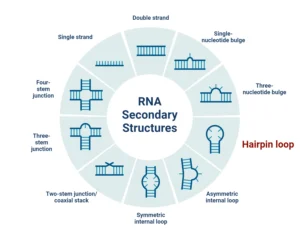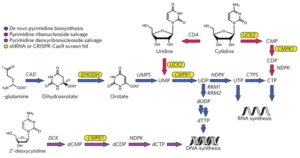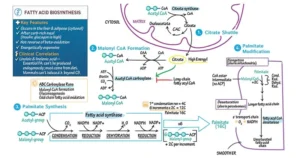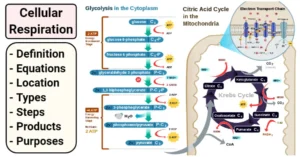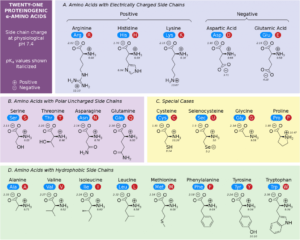Chargaff’s Rules in DNA Structure:
- Elucidating Fundamental Principles:
- Chargaff’s Rules provide crucial insights into the fundamental principles governing the composition and pairing of nucleotide bases in DNA.
- Composition of DNA Bases:
- DNA is comprised of four nucleotide bases: adenine (A), thymine (T), cytosine (C), and guanine (G).
- Chargaff’s First Rule – Complementary Base Pairing:
- Complementary base pairing is highlighted by Chargaff’s First Rule: A pairs with T, and C pairs with G. This principle is essential for the formation of the DNA double-stranded structure.
- Critical for DNA’s Double-Stranded Structure:
- The adherence to complementary base pairing is critical for the stability and formation of the DNA double helix.
- Chargaff’s Second Rule – Consistent Ratios:
- Chargaff’s Second Rule reveals consistent ratios of A to T and C to G in DNA strands. These equal ratios contribute significantly to the stability and overall structure of the DNA double helix.
- Equal Ratios for Stability:
- The presence of equal ratios of complementary base pairs ensures the stability and structural integrity of the DNA double helix.
Chargaff’s Rules lay the foundation for our understanding of the intricate molecular structure of DNA, emphasizing the importance of complementary base pairing and the consistent ratios of nucleotide bases in maintaining the stability of this fundamental genetic molecule.
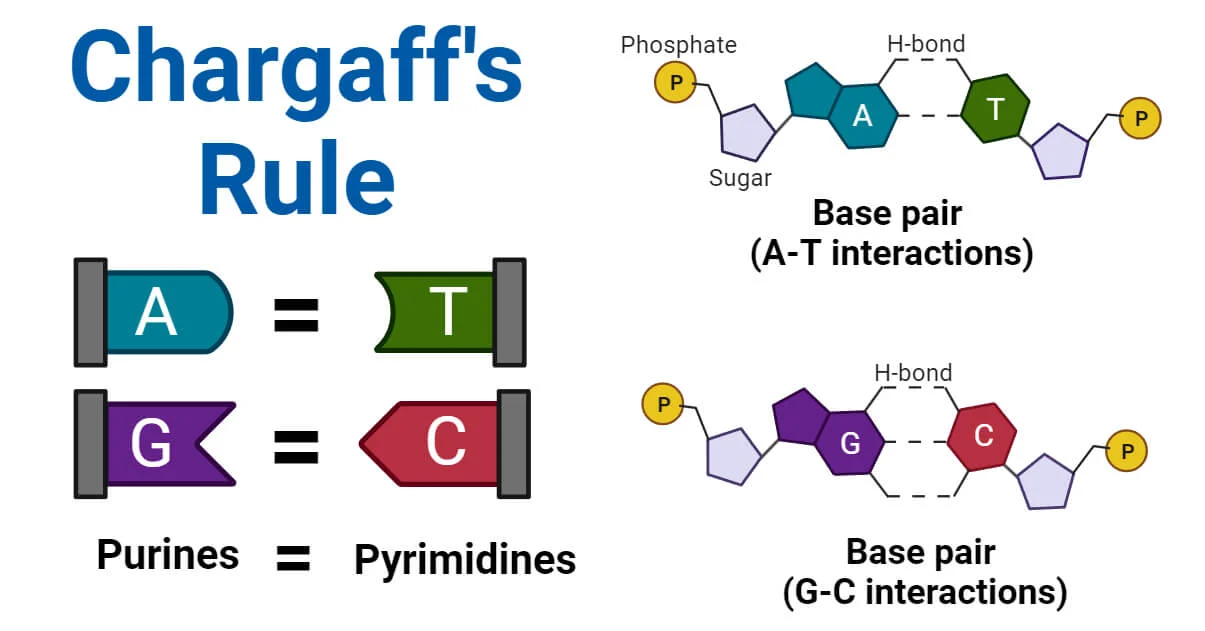
Chargaff’s Rules: Unraveling the DNA Code
Erwin Chargaff’s Contributions: Erwin Chargaff, a distinguished biochemist, made pivotal contributions to molecular genetics research, notably shaping our understanding of DNA and RNA composition. Chargaff’s meticulous work laid the groundwork for what is now known as Chargaff’s Rules.
Significance in Genetics and DNA Research: Chargaff’s Rules are foundational principles that illuminate the intricacies of DNA structure and behavior. They delineate specific pairing rules governing the four nucleotide bases in DNA, forming the basis of its double-stranded structure. These rules are essential for comprehending DNA replication, genetic inheritance, and were instrumental in the discovery of the DNA double helix, profoundly influencing molecular genetics and modern biology.
Base Composition in DNA: DNA, the hereditary material in living organisms, comprises nucleotide units, each consisting of deoxyribose sugar, a phosphate group, and one of four nitrogenous bases: adenine (A), thymine (T), cytosine (C), and guanine (G). The unique arrangement of these bases along the DNA molecule encodes genetic instructions crucial for an organism’s growth, development, and function.
Overview of the Four Nucleotide Bases:
- Adenine (A): Pairs with thymine (T) through two hydrogen bonds.
- Thymine (T): A pyrimidine base, pairs with adenine (A) through hydrogen bonds.
- Cytosine (C): Another pyrimidine base, pairs with guanine (G) through three hydrogen bonds.
- Guanine (G): A purine base, pairs with cytosine (C) through hydrogen bonds.
Chargaff’s Rules unravel the intricacies of DNA pairing, providing a foundation for understanding the genetic code and molecular mechanisms governing life processes.
Chargaff’s First Rule: Decoding DNA Symmetry
Chargaff’s Insight: Biochemist Erwin Chargaff’s groundbreaking observation, known as Chargaff’s First Rule, establishes a fundamental equality in the composition of DNA bases. It asserts that the amount of adenine (A) in a DNA molecule is equivalent to the amount of thymine (T), and likewise, the amount of cytosine (C) equals the amount of guanine (G).
Symmetry in DNA Base Pairs: This rule unveils a remarkable symmetry and consistency in the ratios of adenine-thymine and cytosine-guanine pairs within the DNA structure. It lays the foundation for understanding the principles of DNA composition.
Principle of Complementary Base Pairing: Chargaff’s First Rule is intricately linked with the principle of complementary base pairing, which states that A pairs with T, and C pairs with G. This pairing is upheld by hydrogen bonds, with A-T pairs held together by two hydrogen bonds, and C-G pairs by three. Complementary base pairing is pivotal for the structural integrity and stability of the DNA double helix.
Adenine (A) and Thymine (T) Pairing: Adenine (A) forms a complementary base pair with thymine (T), denoted as A-T. This pairing is consistent with Chargaff’s observation and follows the principle of complementarity.
Cytosine (C) and Guanine (G) Pairing: Cytosine (C) pairs with guanine (G) to form another complementary base pair, represented as C-G. This pairing, governed by hydrogen bonding, contributes to the symmetry of DNA base composition.
Chargaff’s First Rule unravels the elegant symmetry in DNA, providing a key insight into its structural foundation and the principles guiding its replication.
Chargaff’s Second Rule: Balancing the DNA Equation
Decoding DNA Ratios: Chargaff’s Second Rule, unveiled by biochemist Erwin Chargaff, states that in any DNA molecule, the ratio of adenine (A) to thymine (T) and cytosine (C) to guanine (G) is approximately equal. This holds true across diverse species, emphasizing a universal principle in DNA composition.
Universal Harmony in DNA Composition: Regardless of the complexity or origin of species, the equal ratio of A to T and C to G prevails. This universal harmony in DNA composition is a testament to the underlying principles that govern the structure and functioning of DNA.
Complementary Base Pairing in Action: The significance of this rule lies in its support for the principle of complementary base pairing. The equal proportions of these base pairs—A to T and C to G—are crucial for the stability and structural integrity of the DNA double helix.
Structural Stability and Replication Accuracy: Equal proportions of complementary base pairs contribute to the stable structure of the DNA double helix. A pairs with T through two hydrogen bonds, and C pairs with G through three hydrogen bonds. This uniformity ensures a consistent structure, aiding in DNA replication and maintenance.
Implications for DNA Replication: The balanced ratios play a pivotal role during DNA replication. As DNA strands unwind, each strand serves as a template for the synthesis of a new complementary strand. The equal proportions of base pairs facilitate accurate and faithful transmission of genetic information during cellular division and reproduction.
Maintaining the Double Helical Integrity: The uniformity in base pair ratios is central to the helical structure of DNA. The A-T and C-G base pairs complement each other, maintaining a uniform width in the double helix. This structural integrity is vital for the preservation of genetic information.
Chargaff’s Second Rule reinforces the elegant equilibrium in DNA composition, providing foundational principles that guide its structure, stability, and faithful replication.
Significance and Applications of Chargaff’s Rules
Unveiling DNA’s Secrets: Chargaff’s Rules, with their emphasis on equal proportions and complementary base pairing, have played a pivotal role in unraveling the mysteries of DNA. They have been instrumental in understanding the structure and functioning of this fundamental molecule.
Key to DNA Structure and Stability: The equal proportions of A to T and C to G, as highlighted by Chargaff’s Second Rule, are foundational to the stable structure of the DNA double helix. This knowledge is fundamental to grasping how DNA maintains its integrity and functions as the carrier of genetic information.
Watson and Crick’s Guiding Light: Chargaff’s Rules provided guiding principles for the groundbreaking discovery of the DNA double helix by James Watson and Francis Crick. The equal ratios of base pairs served as crucial clues, steering them toward the accurate representation of DNA’s intricate structure. In recognition of their monumental achievement, Watson and Crick were awarded the Nobel Prize in Physiology or Medicine in 1962.
Cornerstone of DNA Sequencing: In the realm of DNA sequencing and genetic research, Chargaff’s Rules serve as a cornerstone. The understanding of complementary base pairing and base pair ratios is indispensable for decoding the genetic code. This knowledge forms the basis for advancements in fields such as medicine, genetics, forensics, and other scientific disciplines.
Deciphering the Genetic Code: Chargaff’s contribution is particularly evident in deciphering the genetic code. The rules he formulated offer a roadmap for researchers seeking to unveil the intricacies of DNA sequences. This, in turn, facilitates the identification of genetic variations, paving the way for breakthroughs in personalized medicine and targeted therapies.
Versatility in Scientific Advancements: The significance of Chargaff’s Rules extends beyond the laboratory, permeating various facets of scientific inquiry. Their impact resonates in fields as diverse as genetics, molecular biology, medicine, and forensic science, showcasing the versatility and enduring relevance of these fundamental principles.
Chargaff’s Rules stand as a testament to the foundational role they have played in advancing our understanding of DNA, guiding pioneering discoveries, and shaping the trajectory of genetic research.
Evolving Insights: Modern Understanding and Extensions of Chargaff’s Rules
Continued Relevance in Modern Research: Chargaff’s Rules, conceived in the mid-20th century, persist as cornerstones in modern molecular biology. Recent research endeavors have not only validated Chargaff’s observations but also propelled them into new dimensions, offering deeper insights into the intricate world of DNA.
Refined Observations in Base Composition: Modern studies have refined our understanding of base composition. Advanced techniques, such as high-throughput sequencing and bioinformatics analyses, allow for a nuanced exploration of DNA sequences. Researchers can scrutinize variations in base composition with unprecedented precision, uncovering subtle patterns and intricacies.
Nuances in DNA Structure and Replication: Ongoing research delves into the nuances of DNA structure and replication, shedding light on the dynamic processes that underlie genetic information transfer. While Chargaff’s Rules laid the foundation, contemporary investigations explore the intricacies of replication fidelity, repair mechanisms, and the three-dimensional organization of the genome.
Gene Regulation and Epigenetics: Modern molecular biology extends Chargaff’s legacy into the realms of gene regulation and epigenetics. The interplay between DNA sequence and regulatory elements, including modifications to DNA bases, is a burgeoning area of exploration. This dynamic perspective adds layers of complexity to our comprehension of how genes are switched on or off.
Incorporation into DNA Technologies: Chargaff’s principles are seamlessly integrated into cutting-edge DNA technologies. From polymerase chain reaction (PCR) to next-generation sequencing, the understanding of complementary base pairing guides experimental design and data interpretation. This integration enhances the accuracy and efficiency of various molecular biology techniques.
Applications in Medicine and Biotechnology: The principles elucidated by Chargaff find practical applications in medicine and biotechnology. Personalized medicine, genetic diagnostics, and gene therapy draw on the foundational knowledge of DNA structure and function inspired by Chargaff’s Rules.
Educational Significance: Chargaff’s Rules continue to be pivotal in educating the next generation of scientists. They provide a gateway for students to explore the intricacies of DNA, fostering a deep appreciation for the molecular ballet that underlies life.
Conclusion: Chargaff’s Rules, far from being relics of the past, thrive as beacons guiding contemporary genetic exploration. As technology advances and our understanding deepens, Chargaff’s legacy expands, opening new avenues of inquiry and enriching the tapestry of molecular biology. The journey initiated by Chargaff endures, with each discovery adding another layer to the intricate story of DNA.

